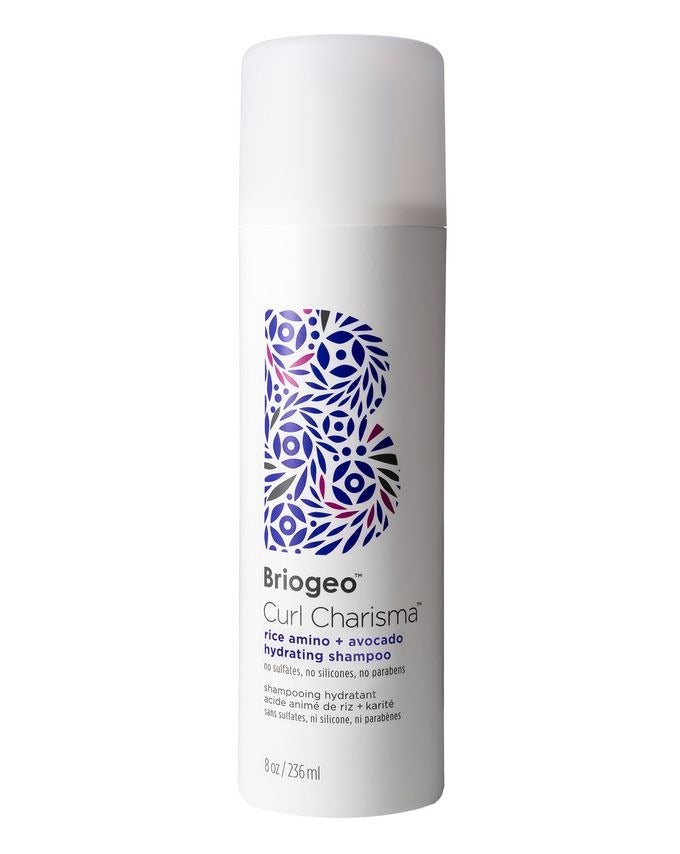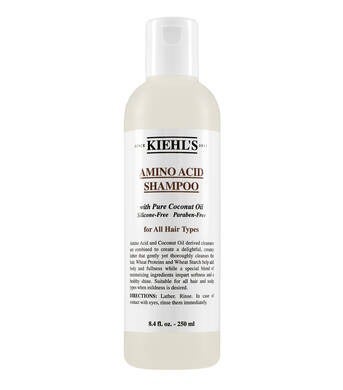This Glossy Hair Treatment Will Take Over When Salons Reopen
Photo by Getty Images.
Whether you want to reduce frizz, minimise the heaviness of thick hair or achieve a shampoo-ad shine, keratin treatments are considered the gold standard when it comes to smoothing and straightening. From KeraStraight to the Brazilian blow-dry, there are multiple treatments available in salons up and down the UK, but one trend in particular is gaining traction among hair experts and keratin regulars. Enter: Japanese hair straightening.
Ahead, we asked hair experts to share everything they know about the popular treatment, including the main benefits and where you can get it done once hair salons reopen.
What is Japanese hair straightening?
AdvertisementADVERTISEMENT
Otherwise referred to as thermal reconditioning, Japanese hair straightening consists of a chemical solution containing cystine, which changes the structure of the hair permanently, says hairstylist Tomoyuki of Tomoyuki & Co. in London's Fitzrovia.
Once the solution is applied to the hair, it breaks the bonds inside, flattening any waves. "This stays on the hair for around 20 minutes depending on the type and length of hair," says Chi Ena at Hairlux salon in Soho. "This is the development period in which the chemical process disables the bonds. When the bonds are fully disconnected, then the product is washed out."
The next stage is straightening. "Hair is then prepared with conditioning treatments to keep it well hydrated, nourished and strong throughout the whole process," adds Chi. "Once this is absorbed, small sections of hair are passed through straighteners at 180 degrees, sometimes lower for damaged hair."
Once the hair is fully ironed straight, it's time for the neutraliser, which works its magic in 10 minutes and speeds up the straightening process. "After 10 minutes, the neutraliser is rinsed out and the hair is blow-dried without any use of styling brushes, because at this point the hair is straight already. To finish the look before leaving the salon, the hair is straightened again."
What are the benefits of Japanese hair straightening?
"The benefits include saving time styling or straightening hair, easy maintenance and better condition," says Tomoyuki. Typically, hair emerges shinier and softer.
AdvertisementADVERTISEMENT
"Hair looks naturally straight, not poker or stiff," adds Chi. "It will feel as though it's had a collagen boost: healthier, stronger and fuller. Hair remains straight when wet and stays frizz-free when humid. You can just wash and go."
How long does Japanese hair straightening last for?
Tomoyuki says the treatment is permanent and results can be prolonged with maintenance. In other words, you'll have to wait for the treatment to grow out entirely to be able to return to your natural hair, so it is a big commitment. "It doesn't wash out gradually like the Brazilian blow-dry and it doesn't break down like a keratin treatment," adds Chi. "It lasts for up to 12 months and root touch-up is somewhere between six to 12 months, but this depends on hair type."
How does Japanese hair straightening differ from keratin treatments and Brazilian blow-dries?
The process is quite different. Tomoyuki mentions that Japanese hair straightening works on the inside of the strands, while Chi says that keratin or Brazilian blow-dry treatments impact the outside layer and are washed out over time. Japanese hair straightening lasts for around six to 12 months, whereas stylists give keratin treatments a lifespan of around two to four months.
How long does Japanese hair straightening take?
Tomoyuki says this depends on your hair length and type but it's a long, labour-intensive process regardless. "Typically from four hours upwards," he says, while Chi has known some treatments to take eight hours. If you're worried about time, it pays to book in for an initial consultation with a hairstylist, who should be able to tell you more.
AdvertisementADVERTISEMENT
How much does Japanese hair straightening cost?
The process is a labour of love and results don't come cheap. Like keratin treatments and Brazilian blow-dries, it does depend on the length of your hair but a consultation with a stylist will determine how much you might pay, as it will vary from salon to salon. Prices at Tomoyuki & Co. start at £360. At Hairlux, prices start at £250.
Are there any side effects of Japanese hair straightening?
As Japanese hair straightening uses a chemical process to reshape the hair, it could cause damage in coloured hair. Tomoyuki says that those with lightened hair above level five (dyed blonde and bleached hair) might not benefit from the treatment, but this goes for hair which has been dyed darker, too. "Some clients have dyed their hair dark and think their hair is healthy, but it doesn't work this way," adds Tomoyuki. During your consultation, let your stylist know if your hair has been dyed, so that they can assess the propensity for damage.
How should you look after your hair post-Japanese hair straightening treatment?
Whatever you do, don't wash your hair immediately. "Clients must wait 48 hours before the next wash," says Chi. "During this time, their new straight hair must be kept down, so no hairbands, hair clips or accessories that can misshape the strands." Sweaty workouts should also be avoided and clients are advised to keep their hair completely dry.
Tomoyuki also recommends using a high quality amino acid shampoo to moisturise hair. Try Kiehl's Amino Acid Shampoo, £19.50, or Briogeo Curl Charisma Rice Amino + Avocado Hydrating Shampoo, £21.50.
Where can you get Japanese hair straightening in the UK?
Currently all hair salons are closed following government guidelines as a result of coronavirus. When they reopen, head to booking app Treatwell to find a salon that offers Japanese hair straightening near you.
AdvertisementADVERTISEMENT








